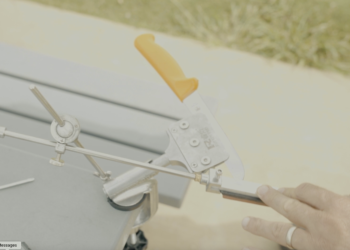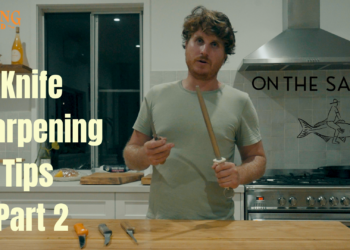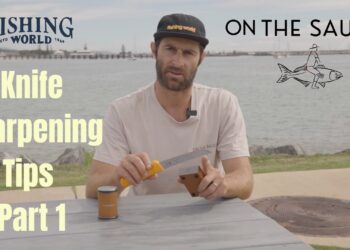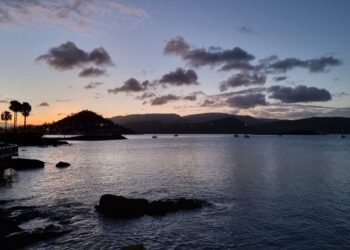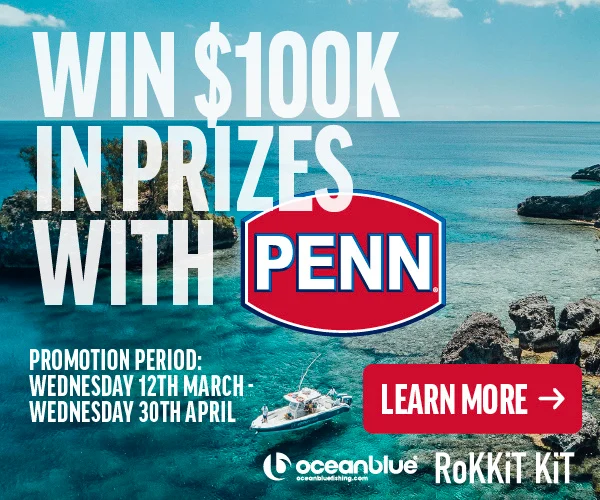
LAST season was far from ideal, especially for those who were eager to sightcast to those hard fighting, gut busting inshore coastal predators known as longtail tuna. Huge amounts of rain, patches of cold, kelp-ridden water and seas that would make even the bravest of surfers think twice kept many anglers in agony. These natural events, along with the sporadic tuna movements, created only small windows of opportunity in the already limited time frame. Most land based fanatics were left wondering if the tuna were ever going to turn up. As if land based spinning wasn’t already challenging enough, right?
Despite the huge swells and brown slicks of floodwater that littered the ocean with debris, pushed the current away and hugged the coastline, I, along with a small minority of the LBG fraternity, was lucky enough to land some truly impressive and memorable catches. However, I think the past season provides lessons to be processed and pondered. As LBG anglers are well aware, chasing gamefish from the stones is no easy feat; quality gamefish are few and very far between.
Like any motivated angler, I’ll take any opportunity I get to perfect my gear and techniques to gain the upper hand in what is one of the hardest and most frustrating forms of finesse sight fishing: LBG spinning. I took the time last season to study what worked for me and my fishing partners in the challenging fishing conditions that presented themselves to better prepare for this new season.
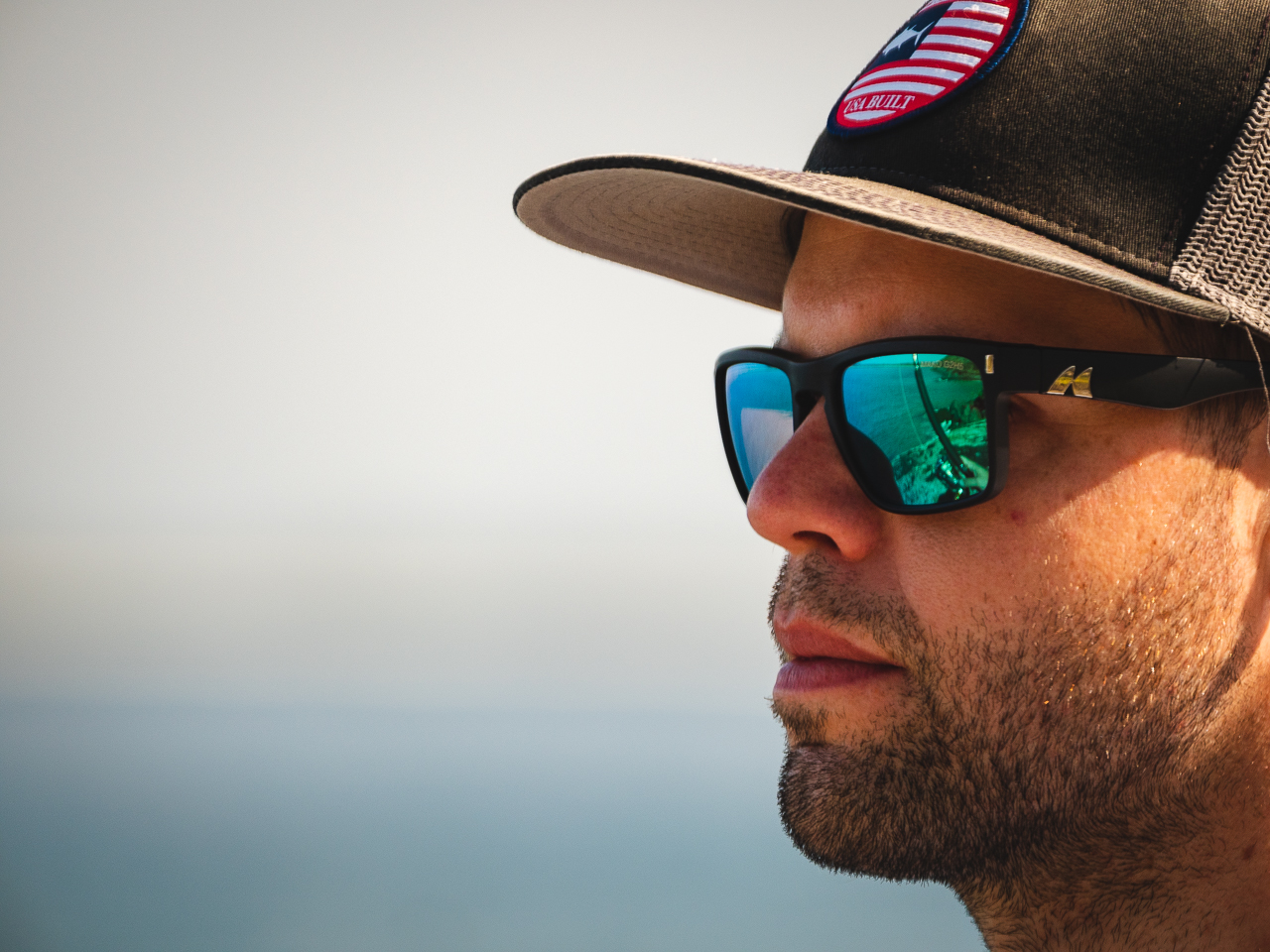
The Basics
As far as I’m concerned the most important tool in sight casting are the angler’s eyes (surprising, I know, but true). Without a doubt, quality polarized sunglasses are not only beneficial in sighting fish but also ensure protection from the harsh glare of the sun and are a guard from swinging chunks of metal and plastic armed with needle pointed hooks.
On one bluefin assault my spinning partner and I were able to spot fish travelling along the rock ledge. This enabled us to successfully land a tuna each while another spinman kicked himself as he forgot his sunglasses and struggled to spot the fish in the greenish water and bright skies. Polarized sunglasses were definitely a prerequisite for sight casting off the stones, and did not leave my head from sunrise to sunset.
Last season also forced me, along with many others, to do some very long casts due to the unseasonably large swells, which pushed large amounts of sand up against the rocks and caused the fish to stay a little wider from the rocks than previous years. This also had a huge effect on anglers’ success as casting distance became an even bigger factor.
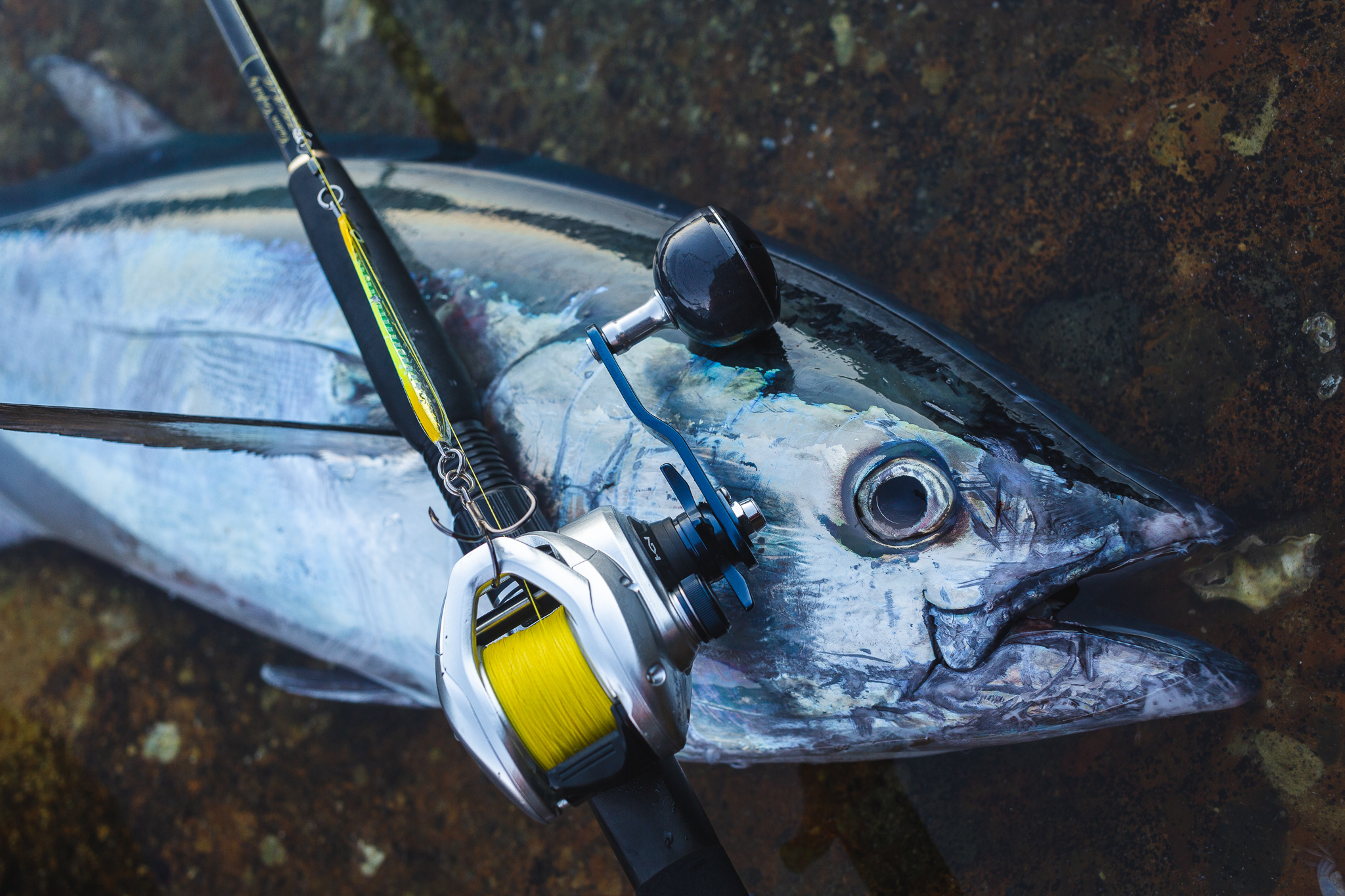
Gear
When it comes to fishing gear – reels should be high speed (ideally retrieve 1m+ of line with each revolution of the reels handle), good quality and most importantly hold around 300m of 15kg or PE3 line. Reels such as the Penn Slammer 3, Shimano Saragosa, Stella or Daiwa Saltiga are popular workhorse reels.
Big baitcasters also work well and reels such as the Shimano Tanx 300 or 400 and Daiwa Lexa also work well. I have used overhead and baitcaster reels for a long time and have found there are definite advantages with casting accuracy and distance with their use. However, they can take sometime to master and gain the most out of.
Rods should ideally be around 9-10 feet in length, but this can depend on the location, which might suit a longer or shorter rod. I have found 9 feet is the optimal length between casting distance and fish fighting capability. Strong graphite rods suited to handling lines of a breaking strain around 10-20kg (PE3-4) with a casting range of 50 – 100 grams will perform the best when casting appropriate sized metal lures, bibbed minnows, poppers, stickbaits and soft plastics.
The Gaffman
Another aspect of LBG that often goes overlooked is gaffing. This can be at times the most dangerous part of anyone’s day. Battling slippery rocks, surging swell and your mate on the rod telling you not to stuff it up – it can be one of the most intense moments of any land based capture. Especially when you have just seen an 3m bronze whaler destroy what you thought was an apex predator leaving only blood and scales in the water. You can’t help but wonder what would happen if you fell into its territory!
Having a good gaffman on your side is the difference between landing your PB longtail or telling your mates about the 20-kilo beauty that did you over at your feet.
Early last season I hooked the power diving bluefin from hell. After a somewhat strange fight due to the large shark population, the bluefin gave its all at my feet, constantly arcing and erratically darting on the surface across one side of the barnacle covered rock ledge to the other. This kept the gaffman busy on the cunjevoi for more than 10 minutes. With good communication and experience a 17 kilo bluefin was landed and later went on the barbeque.
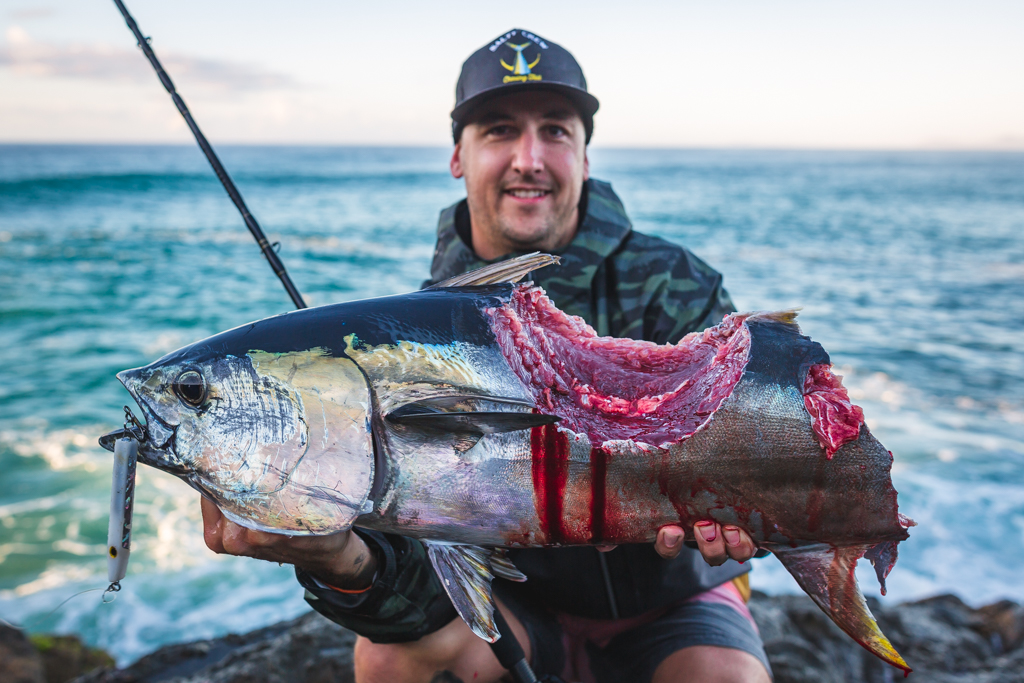
Lures, Line & Terminals
The amount of big sharks waiting to hammer your struggling fish on the surface last season was amazing. Big bronze whalers, aggressive bull sharks and even the feared white pointer were all out there patiently waiting for an easy meal. I was pushing my line to the limit, literally over barnacle-encrusted bommies and rocks.
Tightened drags and big greedy sharks meant that retrofitting lures with heavy rings and upgraded trebles was essential. While there has been an increase in people using a single hook configuration on their lures, such as the Decoy, Owner and Gamakatsu jigging single style of hooks, I opted for a larger sized treble as I found the hook-up rate with bigger than average trebles was far better than a single hook configuration.
Your leader should be attached to your braid mainline with an FG knot. I like to then connect my leader to a solid ring or swivel that is attached to the lures split ring. I personally use 50-80lb nylon or fluorocarbon leader when targeting species such as tuna, mackerel and cobia.
The slightly chocolate tinted water also steered me towards using a bibless minnow such as the Halco Max. In retrospect, this particular lure was used quite a lot and proved effective on big bluefin. I could literally see them inhale the Max without thinking twice about it. Pencil poppers, plugs and metals were, of course, time-proven favourites. Each of these lures mimics the skipping action of a frightened garfish, which resulted in some amazing aerial strikes!
The challenging conditions of the past season definitely tested the dedication of even the most addicted land based angler. While I was lucky enough to land some of my best longtail captures, I can’t help but hope this season that the rain, swell and red weed keeps away!













